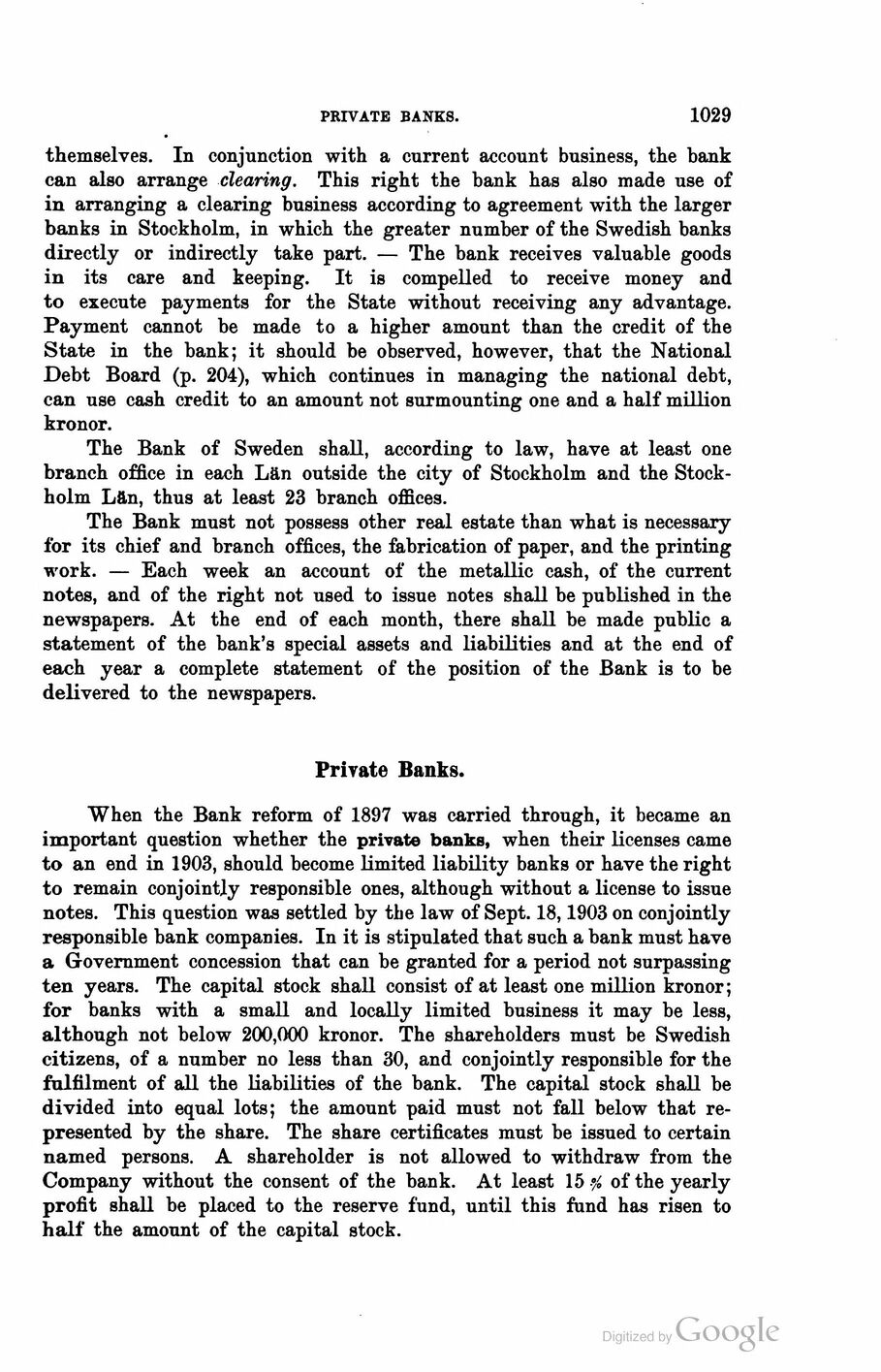
Full resolution (JPEG) - On this page / på denna sida - Second part - XIV. Credit and Insurance Establishments - 2. Banking - Present management and business of the Bank of Sweden - Private Banks

<< prev. page << föreg. sida << >> nästa sida >> next page >>
Below is the raw OCR text
from the above scanned image.
Do you see an error? Proofread the page now!
Här nedan syns maskintolkade texten från faksimilbilden ovan.
Ser du något fel? Korrekturläs sidan nu!
This page has never been proofread. / Denna sida har aldrig korrekturlästs.
PRIVATE BANKS. 1029
themselves. In conjunction with a current account business, the bank
can also arrange clearing. This right the bank has also made use of
in arranging a clearing business according to agreement with the larger
banks in Stockholm, in which the greater number of the Swedish banks
directly or indirectly take part. — The bank receives valuable goods
in its care and keeping. It is compelled to receive money and
to execute payments for the State without receiving any advantage.
Payment cannot be made to a higher amount than the credit of the
State in the bank; it should be observed, however, that the National
Debt Board (p. 204), which continues in managing the national debt,
can use cash credit to an amount not surmounting one and a half million
kronor.
The Bank of Sweden shall, according to law, have at least one
branch office in each Län outside the city of Stockholm and the
Stockholm Län, thus at least 23 branch offices.
The Bank must not possess other real estate than what is necessary
for its chief and branch offices, the fabrication of paper, and the printing
work. — Each week an account of the metallic cash, of the current
notes, and of the right not used to issue notes shall be published in the
newspapers. At the end of each month, there shall be made public a
statement of the bank’s special assets and liabilities and at the end of
each year a complete statement of the position of the Bank is to be
delivered to the newspapers.
Private Banks.
When the Bank reform of 1897 was carried through, it became an
important question whether the private banks, when their licenses came
to an end in 1903, should become limited liability banks or have the right
to remain conjointly responsible ones, although without a license to issue
notes. This question was settled by the law of Sept. 18,1903 on conjointly
responsible bank companies. In it is stipulated that such a bank must have
a Government concession that can be granted for a period not surpassing
ten years. The capital stock shall consist of at least one million kronor;
for banks with a small and locally limited business it may be less,
although not below 200,000 kronor. The shareholders must be Swedish
citizens, of a number no less than 30, and conjointly responsible for the
fulfilment of all the liabilities of the bank. The capital stock shall be
divided into equal lots; the amount paid must not fall below that
represented by the share. The share certificates must be issued to certain
named persons. A shareholder is not allowed to withdraw from the
Company without the consent of the bank. At least 15 tf of the yearly
profit shall be placed to the reserve fund, until this fund has risen to
half the amount of the capital stock.
<< prev. page << föreg. sida << >> nästa sida >> next page >>